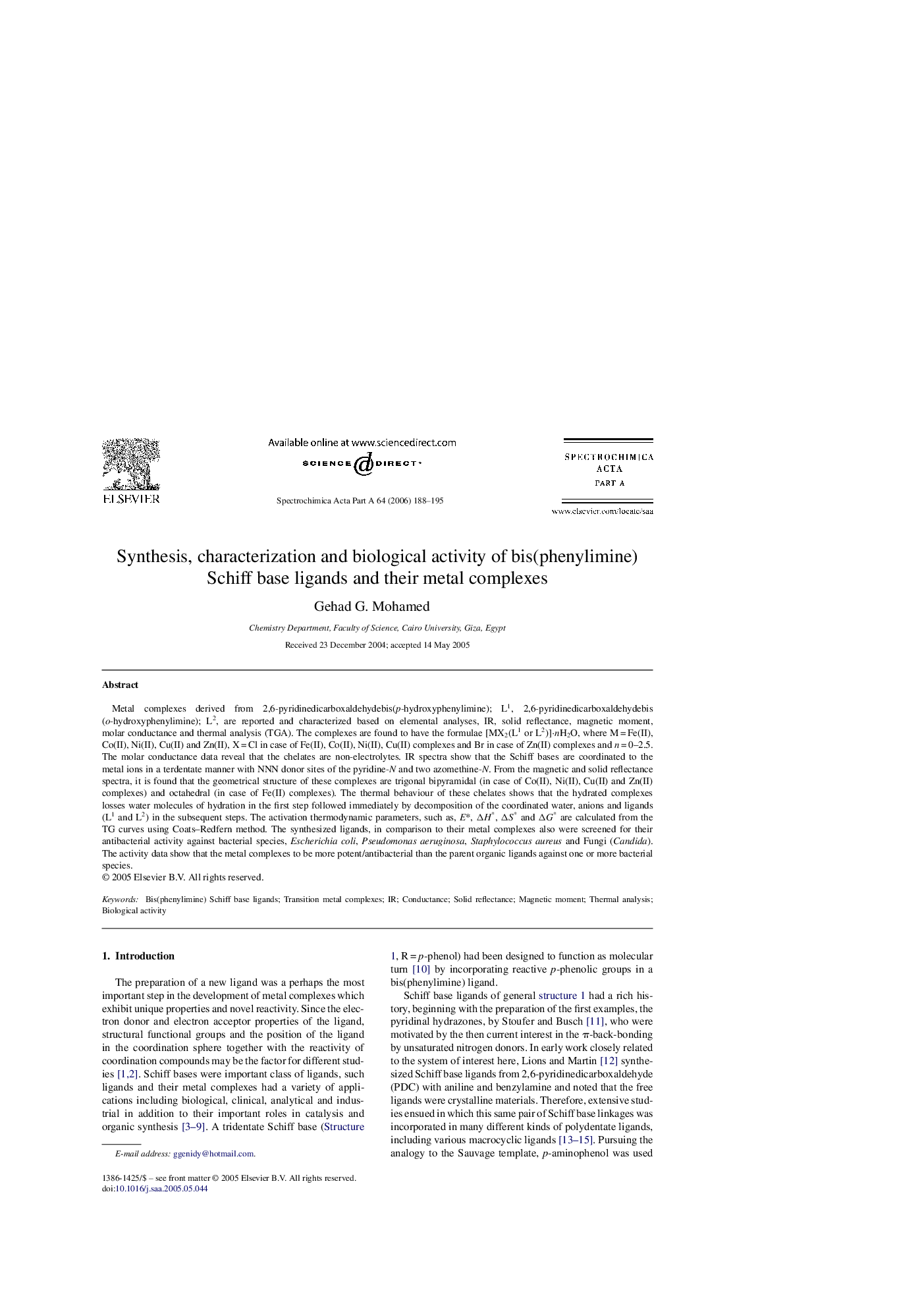| کد مقاله | کد نشریه | سال انتشار | مقاله انگلیسی | نسخه تمام متن |
|---|---|---|---|---|
| 1236737 | 968874 | 2006 | 8 صفحه PDF | دانلود رایگان |

Metal complexes derived from 2,6-pyridinedicarboxaldehydebis(p-hydroxyphenylimine); L1, 2,6-pyridinedicarboxaldehydebis (o-hydroxyphenylimine); L2, are reported and characterized based on elemental analyses, IR, solid reflectance, magnetic moment, molar conductance and thermal analysis (TGA). The complexes are found to have the formulae [MX2(L1 or L2)]·nH2O, where M = Fe(II), Co(II), Ni(II), Cu(II) and Zn(II), X = Cl in case of Fe(II), Co(II), Ni(II), Cu(II) complexes and Br in case of Zn(II) complexes and n = 0–2.5. The molar conductance data reveal that the chelates are non-electrolytes. IR spectra show that the Schiff bases are coordinated to the metal ions in a terdentate manner with NNN donor sites of the pyridine-N and two azomethine-N. From the magnetic and solid reflectance spectra, it is found that the geometrical structure of these complexes are trigonal bipyramidal (in case of Co(II), Ni(II), Cu(II) and Zn(II) complexes) and octahedral (in case of Fe(II) complexes). The thermal behaviour of these chelates shows that the hydrated complexes losses water molecules of hydration in the first step followed immediately by decomposition of the coordinated water, anions and ligands (L1 and L2) in the subsequent steps. The activation thermodynamic parameters, such as, E*, ΔH*, ΔS* and ΔG* are calculated from the TG curves using Coats–Redfern method. The synthesized ligands, in comparison to their metal complexes also were screened for their antibacterial activity against bacterial species, Escherichia coli, Pseudomonas aeruginosa, Staphylococcus aureus and Fungi (Candida). The activity data show that the metal complexes to be more potent/antibacterial than the parent organic ligands against one or more bacterial species.
Journal: Spectrochimica Acta Part A: Molecular and Biomolecular Spectroscopy - Volume 64, Issue 1, 1 May 2006, Pages 188–195